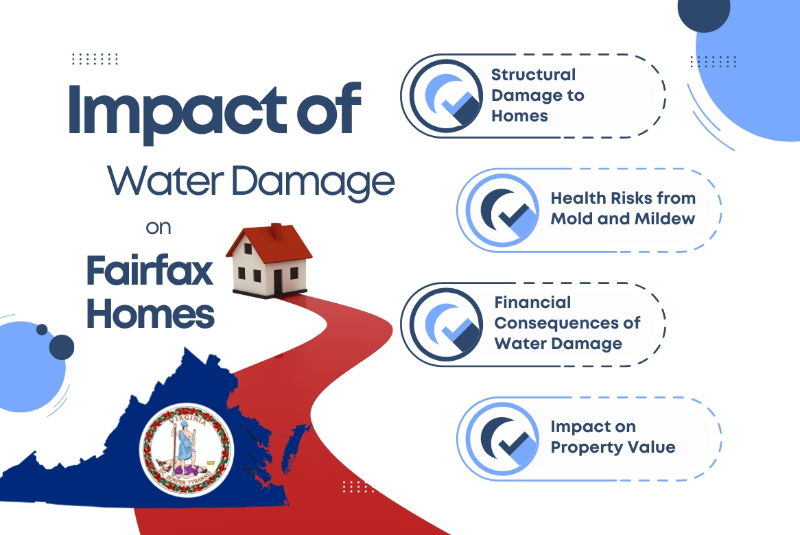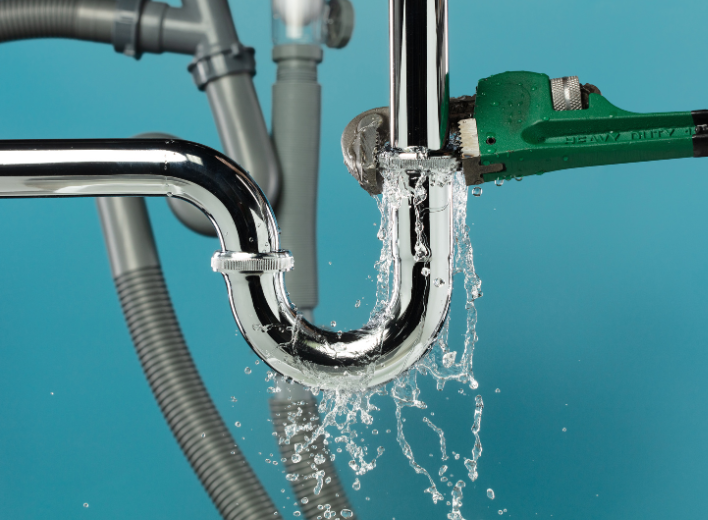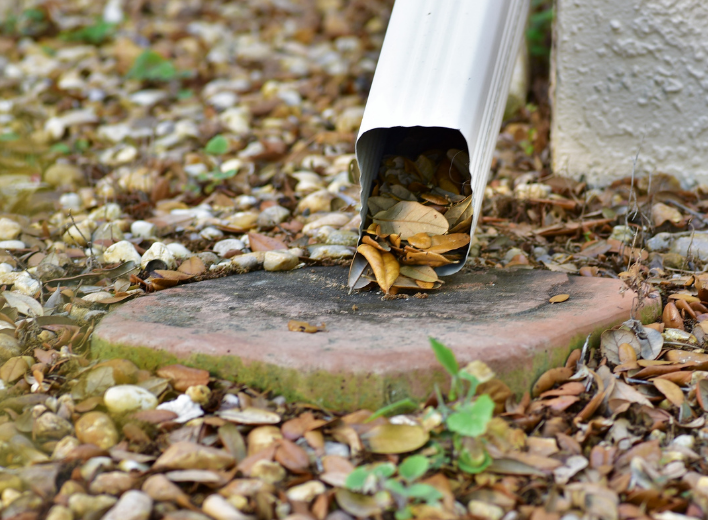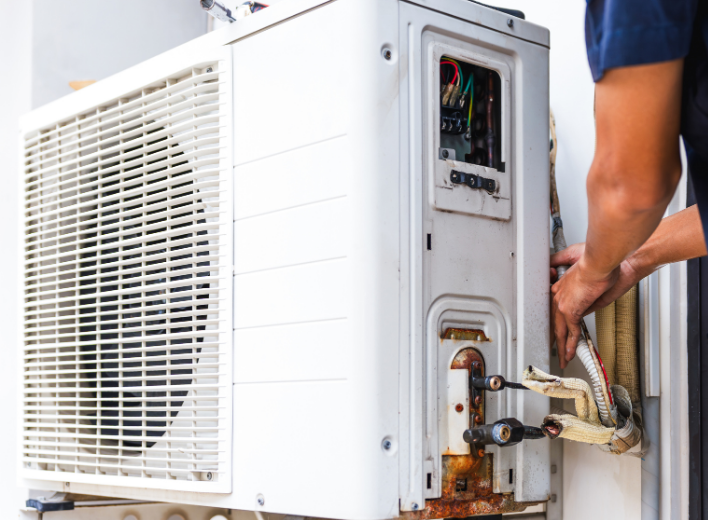Water damage can be a homeowner’s worst nightmare, leading to costly repairs and a toll on your peace of mind. In Fairfax, where seasonal storms and varying weather patterns are part of life, understanding the common causes of water damage is essential for protecting your home. From leaky roofs to faulty plumbing, these issues can creep up when you least expect it. But fret not—knowledge is your greatest ally!
In this article, we’ll explore the top seven common causes of water damage in Fairfax homes, along with practical prevention tips to help you safeguard your property. By staying informed and proactive, you can minimize risks and ensure that your home remains a safe haven. Whether you’re a new homeowner or looking to reinforce your current property’s defenses, this guide will provide valuable insights into maintaining a dry and damage-free living space. Let’s dive in and equip you with the tools needed to tackle water damage head-on!
Understanding the Impact of Water Damage on Fairfax Homes

Water damage in Fairfax homes can lead to severe structural, financial, and health consequences. From compromised walls and ceilings to mold growth and decreased property value, understanding these effects is essential for timely prevention and effective restoration.
Structural Damage to Homes
- Water can weaken walls, floors, and ceilings, causing warping and deterioration.
- Persistent moisture can compromise the foundation, leading to costly repairs.
- Roof leaks or faulty plumbing exacerbate structural risks over time.
Health Risks from Mold and Mildew
- Mold growth caused by water intrusion can trigger allergies and respiratory issues.
- Prolonged exposure to damp conditions increases the risk of asthma and other health complications.
- Early detection and remediation are crucial to protect residents’ health.
Financial Consequences of Water Damage
- Repairing water-damaged structures can be expensive, especially if left untreated.
- Mold remediation and replacement of affected materials add to the overall cost.
- Insurance claims may be complicated without prompt documentation and action.
Impact on Property Value
- Visible water damage can deter potential buyers and reduce resale value.
- Lingering moisture issues may signal neglect, affecting marketability.
- Maintaining a water-tight home preserves both safety and investment potential.
7 Common Causes of Water Damage in Fairfax Homes
Water damage in Fairfax homes can stem from a variety of sources, often leading to costly repairs and health risks if left unchecked. Understanding these causes is essential for prevention. In the following, we highlight 7 common causes that homeowners should watch for to protect their property and maintain a safe living environment:
1. Leaky Roofs: The Silent Source of Water Intrusion

Leaky roofs are one of the most insidious sources of water damage, often going unnoticed until significant harm has already occurred. Fairfax homes, particularly those with older roofing systems, are at risk of water infiltration through worn-out shingles, damaged flashing, and compromised seals around chimneys and vents. Regular roof inspections and maintenance are critical to identifying and addressing these vulnerabilities before they escalate.
Seasonal changes in Fairfax can exacerbate roof leaks. Winter snow and ice accumulation can lead to ice dams, which prevent proper drainage and cause water to seep under shingles. Roof issues often go hand in hand with ceiling damage—learn how to detect and repair problems with our ceiling damage after leak guide. During the spring and summer months, heavy rains and thunderstorms can exploit existing weaknesses in the roof, leading to leaks. Homeowners should be vigilant during these periods, checking for signs of water stains on ceilings and walls, which may indicate a leaky roof.
Preventative measures are key to mitigating roof leaks. Regular cleaning of gutters and downspouts ensures that water is directed away from the roof and foundation. Additionally, trimming overhanging branches can prevent debris accumulation and potential damage from falling limbs. Investing in high-quality roofing materials and professional installation can also provide a more durable defense against water intrusion. By taking these steps, homeowners can significantly reduce the risk of roof-related water damage.
2. Plumbing Leaks and Burst Pipes: Hidden Threats Beneath the Surface

Plumbing leaks and burst pipes are common culprits of water damage, often hidden out of sight until they cause substantial problems. In Fairfax, the fluctuating temperatures can lead to expansion and contraction of pipes, increasing the likelihood of leaks and bursts. For hidden leak risks, see our list of 6 warning signs of smoke damage—many apply to water-damaged interiors as well. These issues can occur in various parts of the home, including behind walls, under floors, and within ceilings, making them particularly challenging to detect and address promptly.
Routine maintenance and inspection of the plumbing system are essential for preventing leaks and bursts. Homeowners should periodically check for signs of moisture, such as damp spots, mold growth, and an unexplained increase in water bills, which may indicate a hidden leak. Insulating pipes, especially those in unheated areas like basements and crawl spaces, can help prevent freezing and subsequent bursting during cold weather.
In addition to regular inspections, homeowners should also be aware of the age and condition of their plumbing system. Older homes in Fairfax may have outdated piping materials that are more prone to corrosion and failure. Upgrading to modern, more durable materials can provide a long-term solution to potential plumbing issues. Furthermore, installing water leak detection devices can offer an early warning system, allowing for swift action to minimize damage. By staying proactive and informed, homeowners can mitigate the risks associated with plumbing leaks and burst pipes.
3. Basement Flooding: Common in Fairfax’s Rainy Seasons

Basement flooding is a prevalent issue for Fairfax homeowners, particularly during the rainy seasons. Heavy rainfall and rapid snowmelt can overwhelm drainage systems, leading to water seepage through foundation walls and floors. Basements, being the lowest part of the home, are naturally prone to flooding, which can cause extensive damage to both the structure and contents of the basement.
Several factors contribute to basement flooding, including poor grading around the home, clogged gutters, and malfunctioning sump pumps. Proper grading ensures that water flows away from the foundation, reducing the risk of seepage. Homeowners should regularly inspect and clean gutters and downspouts to prevent blockages that can cause water to pool around the foundation. For post-flood cleanup, check out our top 10 flood cleanup tips to restore your basement safely and quickly. Additionally, sump pumps should be tested and maintained to ensure they are functioning correctly when needed.
Waterproofing the basement is another effective measure to prevent flooding. This can include applying sealants to walls and floors, installing drainage systems, and ensuring proper ventilation to reduce humidity levels. Homeowners should also consider installing a backup sump pump or battery-powered system to provide additional protection during power outages. By implementing these preventative measures, Fairfax homeowners can significantly reduce the risk of basement flooding and the associated water damage.
4. Faulty Appliances and Water Heaters: Unexpected Culprits

Faulty appliances and water heaters are often overlooked sources of water damage in Fairfax homes. Appliances such as washing machines, dishwashers, and refrigerators can develop leaks due to worn-out hoses, faulty connections, or internal malfunctions. Similarly, water heaters can fail, leading to significant water leakage and damage to surrounding areas. Regular maintenance and timely repairs are crucial to preventing these issues.
Homeowners should periodically inspect appliances for signs of wear and tear, such as rust, cracks, and loose connections. Replacing old or damaged hoses and fittings can prevent leaks before they occur. Additionally, following the manufacturer’s maintenance recommendations, such as cleaning filters and checking for proper drainage, can extend the lifespan of appliances and reduce the risk of water damage. For long-term recovery costs from appliance-related flooding, review our post on the true cost of flood restoration in VA.
Water heaters, in particular, require careful attention. Over time, sediment buildup can cause the tank to corrode and eventually leak. Flushing the water heater annually can help remove sediment and improve efficiency. It’s also important to monitor the age of the water heater, as units older than 10-15 years are more prone to failure. Installing a leak detection system with automatic shutoff can provide an added layer of protection, preventing extensive water damage in the event of a leak. By staying proactive with appliance and water heater maintenance, homeowners can avoid unexpected water damage and costly repairs.
5. Poor Drainage and Clogged Gutters: The Preventable Problem

Poor drainage and clogged gutters are preventable yet common causes of water damage in Fairfax homes. When gutters and downspouts are clogged with leaves, debris, or other obstructions, water cannot flow away from the house as intended. This can lead to water pooling around the foundation, seeping into basements, and causing structural damage. Ensuring proper drainage and regular gutter maintenance can significantly reduce these risks.
Regular gutter cleaning is essential to prevent clogs and ensure that water is effectively directed away from the home. Homeowners should clean gutters at least twice a year, in the spring and fall, and more frequently if there are overhanging trees. Installing gutter guards can also help reduce the amount of debris that collects in the gutters, making maintenance easier and more effective.
Proper landscaping and yard grading are also critical for preventing water damage. The ground should slope away from the foundation to ensure that water flows away from the home. Adding downspout extensions can further direct water away from the foundation, reducing the risk of seepage. Homeowners should also be mindful of areas where water tends to pool and consider installing French drains or other drainage solutions to manage excess water. By taking these preventative measures, Fairfax homeowners can protect their homes from water damage caused by poor drainage and clogged gutters.
6. HVAC System Leaks: Overlooked Yet Damaging

HVAC system leaks are often overlooked sources of water damage in Fairfax homes. Air conditioning units and heating systems can develop leaks due to condensation buildup, clogged drain lines, and malfunctioning components. These leaks can cause water to accumulate in unexpected areas, leading to mold growth, structural damage, and reduced efficiency of the HVAC system. Regular maintenance and timely repairs are essential to preventing these issues.
Air conditioning units, in particular, can produce significant amounts of condensation during operation. If the condensate drain line becomes clogged or disconnected, water can leak into the home. Homeowners should regularly inspect the drain line and clean it to prevent blockages. Additionally, ensuring that the air conditioning unit is properly sized and installed can help reduce excessive condensation.
Heating systems, such as boilers and furnaces, can also develop leaks due to corrosion, faulty valves, and pressure buildup. Regular inspection and servicing by a qualified HVAC technician can help identify and address potential issues before they lead to significant water damage. Homeowners should also be aware of signs of HVAC leaks, such as water stains, musty odors, and reduced system performance. By staying vigilant and proactive with HVAC maintenance, Fairfax homeowners can prevent water damage and ensure the longevity of their heating and cooling systems.
7. Storm Damage and Flash Flooding: A Major Cause in Fairfax

Storms and flash floods are among the leading causes of water damage in Fairfax homes. For a full checklist after storm-related fire or water damage, use our post-fire home inspection checklist as a guide—even if fire wasn’t involved, the inspection flow applies. Intense rainfall, high winds, and debris can compromise roofs, windows, and drainage systems, creating entry points for water and increasing the risk of costly damage.
Roof Damage from High Winds
High winds during storms can lift shingles, damage flashing, and create gaps that allow water to enter your home. Regular roof inspections and timely repairs help prevent leaks and maintain your home’s structural integrity.
Window and Door Vulnerabilities
Storms can shatter or crack windows and damage doors, letting rainwater infiltrate interiors. Installing impact-resistant windows and properly sealing doors can reduce water intrusion and protect your home from storm-related damage.
Basement Flooding Risks
Flash floods often overwhelm drainage systems, leading to water accumulation in basements. Elevating appliances, installing sump pumps, and using flood barriers are effective measures to mitigate basement flooding and protect essential utilities.
Emergency Preparedness and Mitigation
Having an emergency plan, including sandbags and flood response tools, allows homeowners to act quickly during storms. Proactive preparation minimizes property damage, ensures safety, and reduces the financial impact of storm-related water intrusion.
Conclusion: Safeguarding Your Fairfax Home Against Water Damage
Safeguarding your Fairfax home against water damage requires a proactive and informed approach. By understanding the common causes of water damage, such as leaky roofs, plumbing leaks, basement flooding, faulty appliances, poor drainage, HVAC system leaks, and storm damage, homeowners can take preventative measures to protect their property. Regular maintenance, timely repairs, and professional inspections are essential to minimizing the risk of water intrusion and the associated damage.
Investing in preventative measures, such as waterproofing, proper landscaping, and installing leak detection systems, can provide additional layers of protection. Being prepared for severe weather events and having an emergency plan in place can also help mitigate the impact of storm-related water damage. By staying vigilant and proactive, Fairfax homeowners can ensure that their homes remain safe, dry, and damage-free.
In conclusion, water damage can be a significant challenge for homeowners, but with the right knowledge and strategies, it is possible to prevent and manage its effects. By taking a proactive approach and seeking professional assistance when needed, Fairfax residents can protect their homes and maintain a comfortable and secure living environment.
Worried about water damage in your Fairfax home?
Let our certified team help you prevent costly repairs before they start.
👉 Schedule a free water damage assessment and protect your home today.

